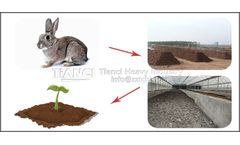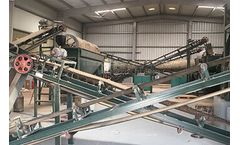Phosphorus Element Content Articles & Analysis
12 articles found
Detection Technologies of Soil Fertilizer The detection of soil fertilizer is mainly to detect the chemical elements contained in it, and the most content is nitrogen, phosphorus and potassium. ...
Krill has a low content of ash making ideal for fresh water feeds. It is lower in content of phosphorus than other marine based meals such as shrimp or fish meal. Its calcium/phosphorus ratio is near to 1,5:1 which favors the absorption of both minerals, and it is significantly lower compared to fish or crustacean meals (3 or ...
The main characteristics of NPK fertilizer production by counter roll pelletizing equipment are as follows: Processing compound fertilizer containing a certain proportion of nitrate nitrogen. Nitrate nitrogen is widely used due to its high temperature and humidity, but it has strong hygroscopicity, and it will be deliquescence into mud under high temperature and humidity, which makes the ...
Organic fertilizer contains a variety of organic acids, humic acids and other hydroxides with strong chelating ability, which can form chelates with a variety of metal elements. For example, when organic fertilizer is mixed with phosphorus fertilizer, organic acids and other chelates in organic fertilizer can chelate highly active aluminum ions in the soil, ...
Nutrient content of rabbit feces Rabbit manure is a kind of high efficient organic fertilizer, the content of nitrogen, phosphorus and potassium is significantly higher than other animal manure. The nitrogen content of rabbit manure is 1.53 times of chicken manure, 3.29 times of sheep manure, 3.83 times of pig manure, the phosphorus content is 2.88 times of chicken manure, 4.6 times of sheep ...
The internal quality of organic fertilizer mainly depends on raw material fermentation and product formula. The key factors affecting the fermentation of organic fertilizer production process are: microorganism, carbon nitrogen ratio, carbon phosphorus ratio, water content, pH value, aeration control. If one factor is not properly controlled, the whole fermentation will be affected, resulting in ...
The effects of water depth, coverage rate and harvest regime on nutrient removal from wastewater and high-protein biomass production were assessed in a duckweed-based (Lemna aequinoctialis) pilot-scale wastewater treatment system (10 basins × 12 m2) that is located near Dianchi Lake in China. The results indicated that a water depth of 50 cm, a coverage rate of 150% and a harvest ...
Genetic diversity has supplied effective ways to improve crop yields and disease resistance. Therefore, we may be able to reduce crop uptake of heavy metals by collecting germplasm resources. In this study, cadmium accumulation and nutrients in radish was investigated by intercropping three genotypes (red, green, and white radish) in different combinations. Both pot and field experiments ...
Aquatic ecosystems are characterized by fluctuating conditions that have direct effects on aquatic communities, but also indirect influences such as changing the toxicity of chemicals. Since the effect of food quality on pesticide toxicity has rarely been studied, in the current experiment Daphnia magna juveniles supplied with four different food quality levels were exposed to a range of ...
When food scarcity increases, instability in society increases. The majority of food consumed is from cereals and legumes. Phosphorus is essential for crop plant growth and soils are depleted as this element is removed from crop lands with harvested grains/seeds. To sustain yields, inputs of nutrients are required to balance losses. On global and continental/regional bases, we assembled nine ...
This paper reports the vermicomposting of Solid Textile Mill Sludge (STMS) spiked with Cow Dung (CD) and Horse Dung (HD) in a six-month pilot-scale experiment employing Eisenia foetida. Growth and fecundity of Eisenia foetida were significantly affected by temperature variations. The lesser number of cocoons and hatchlings were produced in pilot scale experiments than in controlled temperature ...
Phytate is an important antinutritional component of legume seeds, which chelates minerals that are essential to the human diet such as iron and zinc. Phytate levels are often correlated with total seed phosphorus (P). The objective of this research was to evaluate quantitative trait loci (QTL) for seed P and phytate content in an inter-gene pool (G2333 x G19839) recombinant inbred line ...










